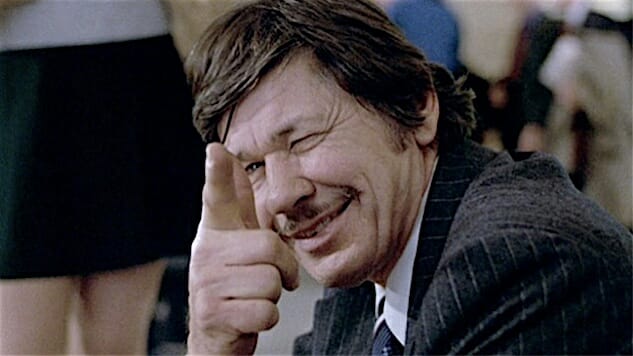We Still Have a Death Wish
The perfect film series to accompany our national nightmare

I’ve had actual arguments with people about the validity of bringing up subtext in the discussion of movies (or any art), and in a post-Gamergate world it’s become a sort of line in the sand. “Resident Evil 5 isn’t racist, the black people are zombies, you have to shoot them!” “Whatever, Kingsman exploded Obama’s head because he’s the president at the time and it’s a global conspiracy! Why are you making this about politics?” Since I’m re-reading The Lord of the Rings right now, I’ve got little sympathy for anybody who has trouble acknowledging the nuances and problems with stuff they love, and to them, I’d like to heartily recommend the Death Wish films.
From the 2018 Bruce Willis vehicle to the five-installment Charles Bronson franchise of yesteryear, no (non-pornographic) film anthology has ever made less effort to bury the raging id at its core.
The Definitive Bronson
The conventional wisdom is that the 1970s in New York City were just a mess, and some statistics at least bear out why the perception would have been that way. There were just shy of 640 murders in the city in 1964, and there were more than 1,500 in 1974, the year Death Wish debuted. (Crime has plummeted in New York and nationwide since the ’90s, with the city reporting 335 murders in 2016, lower even than levels in the 1930s, when the city’s population was about a third smaller than it is today.)
Reasons for all this are complicated and dependent on factors as hard to measure as the stalling of the Civil Rights Act reforms and the de-industrialization of America or as controversial as the comparative lack of safe and legal abortion or an expansion of firearm ownership and gun culture. It’s sort of absurd to think I looked all that information up when the attitude of Death Wish is basically just that poor black people are awful and want to rob you instead of looking for paying jobs.
The premise is that in this damned-to-perdition New York, Paul Kersey, portrayed by Charles Bronson at his steeliest and most vicious, is the most bleeding-heart liberal whose heart ever bled. He was a conscientious objector in the Korean War. He’s a mild sheep in a city of wolves that, apparently, include a leering Jeff Goldblum in a menacing jughead hat. Jughead Goldblum and his nihilistic pals kill Kersey’s wife and rape his daughter into a coma while he’s off at work. We get to see every terrible detail of this, because killing and raping innocent women is bad but titties are great.
The police are useless. Kersey’s son in law is a helpless nincompoop. Bronson, an architect, leaves New York (the most progressive and permissive and racially diverse city and therefore THE MOST FALLEN AND HOPELESS) and goes on a business trip to Arizona, which we immediately see as a wide open and spirited part of the country where the corruption of city living hasn’t ground everybody down yet, and where, damn it, you can still breathe the opinion that the days of the heartless and immoral scum of the world should be made brief.
During this interlude, a floating cowboy hat that may or may not have had a character under it makes sure to tell Bronson that they don’t cotton much to bothersome things like gun safety laws and gives him an opportunity to see a reenactment of a Western gunfight between a sheriff and outlaws. This literal playacting at cowboy tough guy heroics is the unironic watershed moment the film gives us, the one where Kersey decides that being peaceful is for pussies.
The floating cowboy hat gives him a (curiously wimpy) .32 revolver as a gift and goes about avenging in New York, specifically provoking muggers like an uncredited Denzel Washington, just so he can murder them. At one point, passing incognito through a well-heeled New York City gala, some characters are discussing this vigilante. Somebody points out that he kills mostly black people (because he absolutely does) and another guest with a “Look, Muffy!” affect matter-of-factly responds that maybe we should have more white muggers so things can be equal.
So there you go, peaceniks, it’s not racist!
Kersey, amazingly, never does find the creeps who killed his wife, which sort of astounded me. He does manage to get the police on his side (including a very young Christopher Guest in a random bit part), and is eventually gently sent away from New York with a stern warning not to go around murdering anymore. They drop him off in Chicago, where he makes a finger-gun at some punks. Makes you feel safer.
Unpacking all of the ugly things in that first movie would take all day: Hatred toward criminals and punks but zero compassion toward the communities that give rise to them, the implicit attitude that city livin’ is sinful and for suckers, the assertion that (contrary to the stories of the survivors of sexual assault I personally know) being raped is just the absolutely end of a person’s life and breaks them irreparably for all eternity and every poorly dressed man on the street wants to do it to your daughter!!
-

-

-

-

-

-

-

-

-

-

-

-

-

-

-

-

-

-

-

-

-

-

-

-

-

-

-

-

-

-

-

-

-

-

-

-

-

-

-

-








































